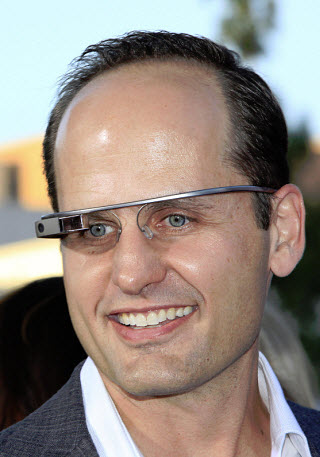Abadía Retuerta LeDomaine is offering the wearable tech to customers.
The Spanish five star exclusive abbey hotel and winery in Spain’s Duero wine region, dating back to 1146, is providing guests who visit its 900 year old property with Google Glass, and is the first hotel in Europe to do so.
The hotel has eight of the wearable devices.
The smart glasses are provided to guests so that they can obtain more from their experience at the hotel, which is well known for its architecture and art collection. During their stay, guests with the devices can watch videos about the hotel, take photos, videos, surf the web, make phone calls, and so on. When it is time for them to leave, guests can keep any of the personal files that were stored on their device, which is downloaded to a memory stick and given to them at checkout.
Andres Araya, LeDomaine’s managing director, has said that “Google Glass is the next step in our complete transformation from an ancient and storied abbey to a sophisticated modern hotel offering the highest level of luxury and service in a sublime historic ambiance.” Araya added that with Glass “we are introducing our guests to an exciting new 21st-century experience in a 12th-century setting.”
This is not the first time Google Glass has been utilized within the travel industry.
 Other examples of Glass being used in the travel industry include Starwood’s app for Glass and Spanish OTA Destination’s app, which enables users of the device to book a nearby hotel. Additionally, Virgin Atlantic has used the wearable tech to receive its guests.
Other examples of Glass being used in the travel industry include Starwood’s app for Glass and Spanish OTA Destination’s app, which enables users of the device to book a nearby hotel. Additionally, Virgin Atlantic has used the wearable tech to receive its guests.
As was previously mentioned, guests at the hotel can enjoy different apps and functions when using Glass. In addition to snapping photos with a blink of an eye or giving a verbal command, they can watch videos including the LeDomaine art tour and can stargaze using the location-based app that will provide users with the ability to see the alignment of the stars above them at any time of the day or night.
As new apps become available for Google Glass, LeDomaine intends to add them to their devices for patrons to enjoy.
A new report issued by Transparency Market Research has revealed a very rapid wearables growth rate.
The figures published in a tech news report by Transparency market Research called “Wearable Technology Market – European Industry Analysis, Size, Share, Growth, Trends and Forecast, 2013 – 2019” have shown that while the wearables market was estimated to be worth $308.69 million, last year, the predicted growth rate will bring that stat to $2.54 billion by the close of 2019.
That represents a compound annual growth rate (CAGR) of 42.1 percent from this year through 2019.
The wearable technology marketplace currently holds a kind of niche position that is dominated by a handful of strong players. That said, additional participants are regularly stepping into this sector and are adding their own product contributions along the way. Still, the selections for consumers remain somewhat limited – when compared to the rest of the mobile tech offerings – and the price tags are still considered to be high enough to be prohibitive to major blocks of shoppers.
Equally, wearable technology is working its way into many marketplaces, some of which are seeing rapid growth.
 Wearables are finding their way into everything from military applications to industrial, and from medical and healthcare to fitness and wellness, and even simple infotainment. Moreover, as the number of wearable mobile devices continues to grow, so will their various applications. Development is rapidly continuing and the report predicts that this trend will be maintained throughout the forecast period.
Wearables are finding their way into everything from military applications to industrial, and from medical and healthcare to fitness and wellness, and even simple infotainment. Moreover, as the number of wearable mobile devices continues to grow, so will their various applications. Development is rapidly continuing and the report predicts that this trend will be maintained throughout the forecast period.
Among the products that are currently making headway in the wearable device market are smartwatches, augmented reality headsets and glasses, smart sports glasses, activity and fitness monitors, sleep sensors, and health and biometrics trackers. Various types of jewelry and clothing are also trying to crack their way into the space, but they are typically quite small and are the product of limited startups.
That said, many of the wearable technology devices that are catching on are only starting with their primary design purpose but are branching off into many other applications as consumers use them in their everyday lives. Many combination purpose devices are starting to be worn by early adopters.
 Other examples of Glass being used in the travel industry include Starwood’s app for Glass and Spanish OTA Destination’s app, which enables users of the device to book a nearby hotel. Additionally, Virgin Atlantic has used the wearable tech to receive its guests.
Other examples of Glass being used in the travel industry include Starwood’s app for Glass and Spanish OTA Destination’s app, which enables users of the device to book a nearby hotel. Additionally, Virgin Atlantic has used the wearable tech to receive its guests.
 Wearables are finding their way into everything from military applications to industrial, and from medical and healthcare to fitness and wellness, and even simple infotainment. Moreover, as the number of wearable mobile devices continues to grow, so will their various applications. Development is rapidly continuing and the report predicts that this trend will be maintained throughout the forecast period.
Wearables are finding their way into everything from military applications to industrial, and from medical and healthcare to fitness and wellness, and even simple infotainment. Moreover, as the number of wearable mobile devices continues to grow, so will their various applications. Development is rapidly continuing and the report predicts that this trend will be maintained throughout the forecast period.